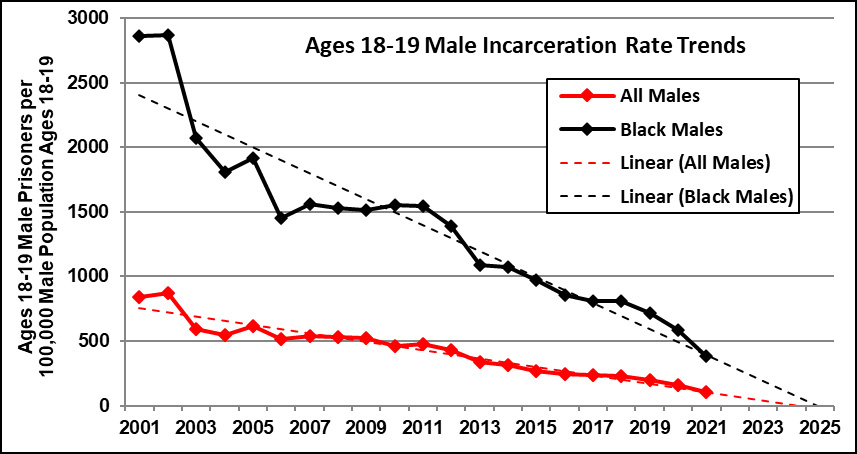Are illegal immigrants taking away American jobs? Tim Carney says it doesn't show up in the unemployment rate, but Mickey Kaus suggests this might not be a reliable measure:
Lay person here: So a native-born worker is in his 60s. Migrants surge into his sector, wages fall (in part because they're willing to work for less, in part due to sheer numbers). He says "F__k it, I'll just retire." Hard to say this retirement is a) unrelated to the migrant… https://t.co/lPHdSJCys1
— Mickey Kaus (@kausmickey) June 7, 2024
Let's look at this. The big surge in illegal immigration started in 2021, so let's see if people in their 60s have been retiring at a higher rate since then:
 Nope. The number of folks in their 60s who are still working has gone up. And it's the same story for age 65-69.
Nope. The number of folks in their 60s who are still working has gone up. And it's the same story for age 65-69.
How about zooming in on Carney's chart of unemployment for the native born?
 It's currently at 3.8% and has been shrinking or flat the entire time. But unemployment numbers can miss people who have exited the labor force and given up. So let's look at the participation rate for natives:
It's currently at 3.8% and has been shrinking or flat the entire time. But unemployment numbers can miss people who have exited the labor force and given up. So let's look at the participation rate for natives:
 It's up. Finally, here's a look at the number of people who are new claimants of Social Security each year. This is for retired workers only, not survivors or those on disability:
It's up. Finally, here's a look at the number of people who are new claimants of Social Security each year. This is for retired workers only, not survivors or those on disability:
 This one starts back in 2001 because you need to look at current retirements compared to the pre-pandemic trend. It's been below trend for the entire period of high border crossings.
This one starts back in 2001 because you need to look at current retirements compared to the pre-pandemic trend. It's been below trend for the entire period of high border crossings.
It's easy to make up endless "But what if...." scenarios when the basic data doesn't support your preferences. Anyone can play. You guys do it to me all the time in comments.
Sometimes these scenarios legitimately need to be investigated. But most often they're nothing more than mud on the walls, hoping against hope that you can introduce enough confusion to get people on your side. But in this case, there's just no there there. All the available data suggests that native-born workers of all stripes are in strong demand and have jobs.
Of course, the last refuge of the mud-tosser is a hypothetical. Maybe if illegal immigration had stayed low these numbers would be even better. Sure, maybe. And it's unprovable one way or the other, so there's no way to argue the contrary. You win!
However, if you just want to know what the available evidence says, it says that the recent surge in border crossings hasn't had any noticeable effect on wages, employment, or retirement for the native born. There might be isolated effects in certain industries or regions, but if there are they must be small enough not to impact the overall picture.
None of this should surprise anyone. There's a good deal of evidence that illegal immigrants compete for a different set of jobs than native-born Americans. Migrants mostly take the crummy jobs that natives turn down because they can get better ones—by virtue of their fluent English and legal work status. The border crossers simply live and work in a whole different economy than those born here.








